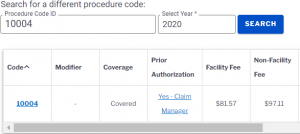The Department of Labor and Industries (L&I) has good news for fire fighters and others that expose themselves to fire smoke. Explicitly, Washington State will be among the first states to develop health and safety rules to protect wild fire workers in their jobs. This article covers fire fighter L&I claim issues and special considerations.
Fire fighting and air quality
Wild fire occurrences increase every year. Sadly, over time, the entire West Coast is losing more land and woods to fires. Therefore, every fire fighter in the fire department has greater exposure to more unhealthy air quality during wild fire season. In fact, fire smoke during September 2020 caused some of the worst air quality in the world in Western Washington. The poor air quality lasted a long period of time. As a result, the authorities encouraged residents to stay indoors and avoid breathing the toxic air.
Unfortunately, outdoor workers cannot stay inside to avoid the bad air. If you are a construction worker, mail carrier, farm worker, or firefighter, you must be outside to perform your job. Moreover, we have to consider that wild fire season aligns with harvest time for many crops in Washington State.
Fire fighter L&I claim: Exposure to fire, smoke and chemicals
According to studies, long exposure to this kind of toxic air causes acute health conditions and occupational diseases. The hazards include more than the smoke alone. Fire fighters, for example, expose themselves to not only to fire smoke but also to chemicals and gases. Many other workers also deal with fine particles in the air that can lead to significant health issues. These health effects are expensive, both in terms of treatment costs and lost work time.
Last September, outdoor worker and advocates accused employers (and the government) of not doing enough to protect them from fire and smoke. In response, L&I took steps recently to begin drafting rules to remedy the situation. Here, the goal for L&I is to develop clear health and safety regulations for identifying and controlling harmful exposures. Thus far, we know that the regulation will also include the use of personal protective equipment (PPE).
Conclusion
Personally, I’m proud to share that Washington State will be the second state to develop these safety rules and regulations. Consequently, L&I will work closely with fire fighters and other stakeholders to ensure the new rules are on point. Like always, there will be opportunities for the public to provide comments and weigh in as well.



